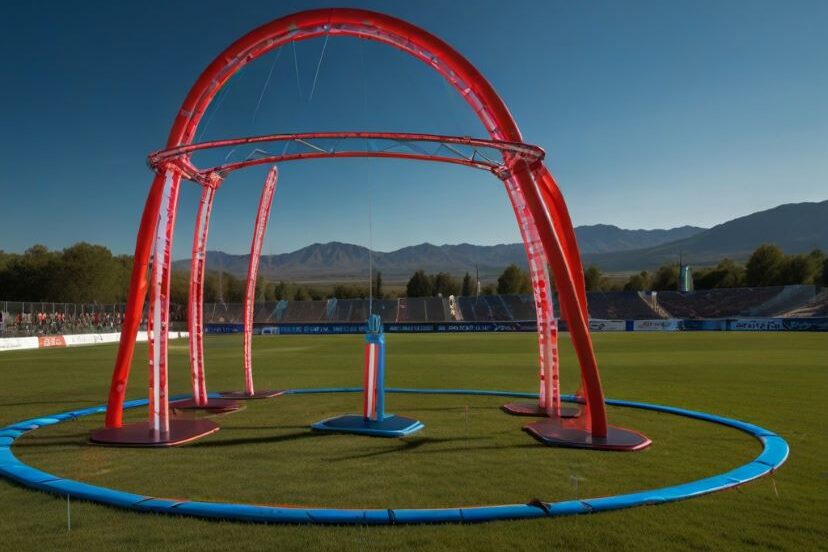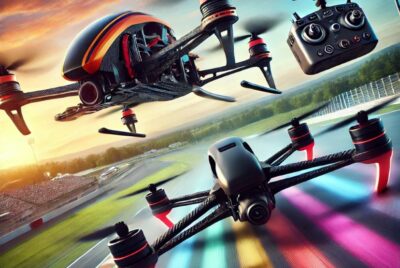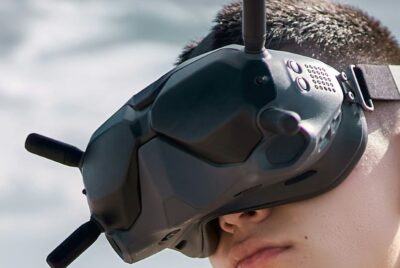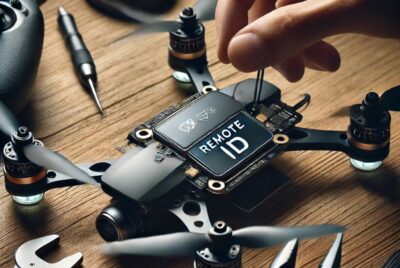Drone Racing Courses: Mastering the Art of High-Speed Flight
Hey there! Some links on this page are affiliate links which means that, if you choose to make a purchase, I may earn a small commission at no extra cost to you. I greatly appreciate your support! Please see our Disclosure to learn more.
Welcome to the exhilarating world of drone racing courses – the ultimate test of a pilot’s skill, strategy, and nerves. As a passionate racer and course designer, I’m thrilled to share my insights on what makes a great racing course and how you can approach them as a pilot. Whether you’re a seasoned pro looking to shave milliseconds off your lap times or a newcomer eager to experience the thrill of FPV flight, understanding the intricacies of racing courses is essential to success in this exciting sport.
The Anatomy of a Drone Racing Course
At its core, a drone racing course is a three-dimensional track that challenges pilots to navigate their drones through a series of gates, obstacles, and turns as quickly and efficiently as possible. But within that basic framework, the possibilities for creativity and innovation are nearly endless.
Drone Racing Course Gates and Obstacles
The most fundamental elements of any racing course are the gates – the checkpoints that pilots must pass through in order to complete a lap. Gates come in many different shapes and sizes, from simple square hoops to more complex designs like triangles, hexagons, or even custom shapes.
In addition to gates, many courses feature obstacles that pilots must avoid or navigate around. These can include flags, cones, or even more elaborate structures like scaffolding, tunnels, or mock buildings. The placement and design of obstacles can greatly affect the difficulty and flow of a course.
Turns and Elevation Changes
Another key aspect of course design is the use of turns and elevation changes to create a more dynamic and challenging flying experience. Sharp hairpin turns, sweeping banked curves, and sudden drops or climbs can test a pilot’s throttle control, coordination, and spatial awareness.
The best courses strike a balance between speed and technicality, with a mix of straightaways that allow for all-out acceleration and more intricate sections that require precise maneuvering. A well-designed course should have a rhythm and flow that feels natural and exciting to fly.
Environmental Factors
The environment in which a course is set can also play a big role in its character and difficulty. Indoor courses may have more consistent lighting and weather conditions, but often have tighter spaces and more obstacles to navigate. Outdoor courses offer more room to stretch out and hit top speeds, but can be affected by factors like wind, sun glare, and varying terrain.
Some of the most memorable racing courses take advantage of unique environments to create one-of-a-kind flying experiences. Imagine weaving through the scaffolding of an abandoned factory, diving into an empty swimming pool, or threading the needle between the blades of a giant wind turbine – the possibilities are limited only by the imagination of the course designers.
Types of Drone Racing Courses
While every racing course is unique, there are some common categories and styles that you’re likely to encounter in competitions and events around the world.
Freestyle Drone Racing Courses
In freestyle courses, the emphasis is on creativity, flow, and style rather than pure speed. These courses often feature more open layouts with fewer gates and obstacles, allowing pilots to showcase their skills with acrobatic tricks, dives, and other flair moves.
Freestyle courses may be judged on criteria like originality, execution, and overall impression, rather than simply who crosses the finish line first. They’re a great way for pilots to express their individual flying styles and push the boundaries of what’s possible with FPV drones.
Time Trial Drone Racing Courses
Time trial courses are all about speed – the goal is to complete the course as quickly as possible, with each pilot flying solo against the clock. These courses often feature more straightaways and sweeping turns to allow for maximum acceleration, with fewer technical obstacles to slow pilots down.
Time trial courses are a great way to measure your raw speed and efficiency as a pilot, and to track your progress over time. They require a different set of skills than head-to-head racing, with a focus on smooth lines, consistent throttle control, and minimizing mistakes.
Head-to-Head Drone Racing Courses
In head-to-head racing, multiple pilots compete on the same course at the same time, with the goal of being the first to cross the finish line. These races are often organized into heats and brackets, with winners advancing to the next round until a champion is crowned.
Head-to-head courses can be more unpredictable and chaotic than time trials, with pilots jockeying for position, drafting off each other, and sometimes even colliding in mid-air. The best head-to-head racers are those who can think strategically, adapt to changing conditions, and maintain their composure under pressure.
Long-Range Drone Racing Courses
As the name suggests, long-range courses are designed to test pilots’ endurance and navigation skills over greater distances. These courses may stretch over several kilometers, and often feature checkpoints or gates that pilots must hit in a specific order.
Long-range races require a different set of equipment than traditional courses, with drones optimized for efficiency, range, and stability rather than raw speed. Pilots must also have a solid understanding of battery management, GPS navigation, and other technical considerations to succeed in these grueling events.
How to Approach Drone Racing Courses as a Pilot
Now that we’ve explored some of the different types and elements of racing courses, let’s talk about how you can approach them as a pilot to maximize your performance and enjoyment.
Walk the Course
Before you ever take off, it’s essential to thoroughly scout and study the course layout. Walk the entire length of the course, noting the placement of gates, obstacles, and other key features. Try to visualize your ideal flight path, identifying areas where you can carry speed, make passes, or recover from mistakes.
Many pilots also find it helpful to watch other competitors fly the course, either in person or on video. Look for different lines and techniques that you can incorporate into your own flying, and take note of any tricky sections or potential hazards.
Develop a Strategy
Based on your study of the course, develop a clear strategy for how you want to approach each section and the race as a whole. Think about your strengths and weaknesses as a pilot, and how you can use the course layout to your advantage.
For example, if you’re particularly skilled at tight, technical flying, you may want to focus on nailing the most intricate sections of the course and making up time there. If you’re more of a speed demon, look for opportunities to open up the throttle and gap your opponents on the straights.
Your strategy should also take into account factors like your starting position, the number of laps, and the specific rules and scoring system of the event. The more prepared and adaptable you are, the better equipped you’ll be to handle whatever challenges the course throws your way.
Practice, Practice, Practice
Of course, no amount of strategizing or visualization can replace the value of good old-fashioned practice. The more time you spend flying the course, the more comfortable and confident you’ll become with its unique challenges and rhythms.
If possible, try to arrive at the event venue early to get in some practice laps before the official races begin. Focus on hitting your lines consistently, building speed through the turns, and minimizing mistakes like oversteering or clipping gates.
It can also be helpful to break the course down into smaller sections and drill them repeatedly until you have them dialed in. Pay attention to your drone’s performance and make any necessary adjustments to your tuning or equipment setup.
Manage Your Nerves
Racing in front of a crowd or under the pressure of competition can be nerve-wracking, even for experienced pilots. It’s important to find ways to manage your nerves and stay focused on the task at hand.
Some pilots find it helpful to develop a pre-flight routine or ritual, such as taking deep breaths, visualizing a perfect lap, or listening to music to get in the zone. Others use techniques like positive self-talk or mantras to stay motivated and confident.
Remember that everyone gets nervous, and that making mistakes is a natural part of the learning process. Don’t get too caught up in the results of any one race – focus on enjoying the experience, learning from your mistakes, and celebrating your successes along the way.
Learn from the Best
One of the best ways to improve your course-flying skills is to learn from the best pilots in the world. Watch videos of top racers and analyze their techniques, lines, and strategies. Attend events and observe how the pros approach different types of courses and conditions.
If you have the opportunity, don’t be afraid to ask for advice or feedback from more experienced pilots. Most racers are happy to share their knowledge and insights with newer competitors, and can offer valuable tips on everything from equipment setup to mental preparation.
You can also learn a lot by getting involved with your local FPV community and participating in group events and practice sessions. Flying with others is a great way to push yourself, try new things, and learn from a diverse range of perspectives and flying styles.
Designing Your Own Courses
As you gain more experience and confidence as a racer, you may find yourself wanting to design and build your own courses. This can be a fun and rewarding way to challenge yourself and your fellow pilots, and to contribute to the growth and creativity of the racing community.
When designing a course, start by considering the environment and space you have available. Look for natural features like trees, hills, or buildings that you can incorporate into the layout, and think about how you can use elevation changes and obstacles to create interest and variety.
Next, sketch out your design on paper or using computer software, paying attention to factors like flow, balance, and difficulty. Consider how different types of pilots and skill levels will approach the course, and try to create a mix of challenges that will appeal to a wide range of racers.
Once you have a basic design, start building and testing your course in the real world. Use cones, flags, or other markers to lay out the gates and obstacles, and fly the course yourself to get a feel for how it flows and where improvements can be made.
Finally, invite other pilots to try out your course and provide feedback. Listen to their suggestions and observations, and be open to making changes and refinements based on their experiences. Remember, the goal is to create a course that is fun, challenging, and rewarding for everyone who flies it.
Conclusion
Drone racing courses are the ultimate proving ground for FPV pilots – a thrilling and ever-evolving landscape of speed, skill, and creativity. Whether you’re navigating the tight turns of a technical indoor track or blasting through the sweeping vistas of a long-range course, the rush of flying on the edge is truly unparalleled.
As you explore the world of racing courses, remember to approach each one with a sense of curiosity, humility, and sportsmanship. Study the layout, develop a strategy, and practice your lines, but also be open to learning from your mistakes and the experiences of others.
Above all, have fun and embrace the incredible community and camaraderie that surrounds this sport. Racing is not just about winning or losing – it’s about pushing yourself to new heights, expressing your unique style and vision, and sharing the stoke with your fellow pilots.
So gear up, charge those batteries, and get ready to tear up the course. The world of drone racing awaits, and with dedication, practice, and a little bit of madness, you might just find yourself standing atop the podium someday. See you on the starting line, pilot.
FAQs
- What’s the best way to practice for a drone racing course?
The best way to practice is to fly the course as much as possible, either in real life or using a simulator. Break the course down into sections and drill them repeatedly, focusing on consistency and minimizing mistakes. Also, study videos of other pilots flying the course and try to learn from their techniques and lines. - How do I design a good racing course?
Start by considering the environment and space you have available, and look for natural features you can incorporate into the design. Sketch out your layout, paying attention to flow, balance, and difficulty. Build and test your course in the real world, and be open to feedback and suggestions from other pilots. - What should I do if I keep crashing on a particular part of the course?
If you’re consistently crashing in the same spot, take a step back and analyze what’s going wrong. Are you coming in too hot? Misjudging a turn? Losing focus? Once you identify the problem, break that section down and practice it slowly and deliberately until you have it dialed in. Don’t be afraid to ask for help or advice from more experienced pilots. - How can I manage my nerves during a race?
Everyone gets nervous, but there are ways to manage those feelings. Develop a pre-flight routine or ritual to help you get in the zone, such as deep breathing, visualization, or listening to music. Stay focused on the present moment and the task at hand, rather than worrying about the outcome of the race. Remember that mistakes are part of the learning process, and try to maintain a positive attitude regardless of the results. - What’s the most important thing to remember when flying a racing course?
Have fun and fly with a sense of joy and exploration. Racing is a thrilling and rewarding pursuit, but it’s important not to get too caught up in the competitive aspects. Embrace the challenge, learn from your mistakes, and celebrate the incredible community and creativity that surrounds this sport. At the end of the day, we’re all just a bunch of grown-ups playing with toy helicopters – so don’t take it too seriously, and enjoy the ride!
Final Thoughts
Drone racing courses are more than just a collection of gates and obstacles – they are living, breathing entities that challenge us to push the boundaries of what’s possible with these incredible machines. Each course has its own unique personality and rhythm, and as pilots, it’s our job to unlock its secrets and find the flow within the chaos.
As you embark on your own racing journey, remember that the path to mastery is paved with countless crashes, frustrations, and setbacks. But it’s also filled with moments of pure exhilaration, camaraderie, and personal triumph that make all the hard work worthwhile.
Embrace the process, trust in your abilities, and never stop learning and growing as a pilot. The world of drone racing is constantly evolving, and there will always be new courses to conquer, new techniques to master, and new friends to make along the way.
So here’s to the crazy ones – the misfits, the rebels, the troublemakers. The ones who see things differently and aren’t afraid to push the limits. The ones who know that the only way to truly fly is to let go of fear and embrace the unknown.
In the immortal words of Han Solo, “Never tell me the odds.” Because when you’re racing on the edge, anything is possible. So charge those batteries, strap on your goggles, and let’s go tear up some courses. The future of drone racing starts now, and it’s going to be one hell of a ride.




